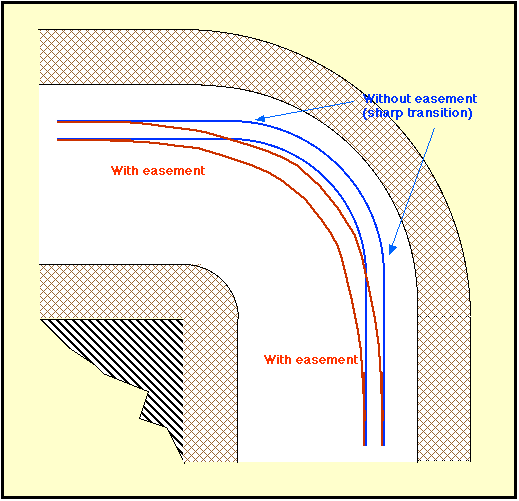
| Return to previous page |
|
When a tram travelling in a straight line
comes to a curved portion of track, the curve must begin gradually
or the passengers will be thrown off balance by the sudden transition.The
mathematical form of such a progressive curve, often called a
'spiral', is complex and various approximations to the ideal have
served tramways adequately over the years.
In practical terms, a curve will take up a different position in the road because of this 'easement' than it would if it were just a constant radius.

The extra space occupied by the easement must be allowed-for when calculating the positioning of tram tracks in narrow streets.
In very exceptional circumstances the easement may be dispensed with, for instance where there is no alternative because of restricted road space and tight corners. In this case, there must be a strictly observed speed restriction placed on all trams using that section of track, but this is not necessarily a great disadvantage because, on safety grounds, the tram would already be limited in speed by the narrowness of the street and restricted visibility of a sharp corner.
In the restricted space of a tram depôt, easement is a luxury which is never considered necessary - the vehicles should always be manoevering slowly and there should be no passengers on board.
Historic footnote:
A cinematograph film exists of an old Bath tram rounding a sharp
curve at the south-west corner of the now-demolished Bath Royal
Literary and Scientific Institute building at Terrace Walk. This
exceptionally tight curve was apparently installed without easement
and, as the tram comes out of the sharp corner directly onto straight
track, it is seen to jolt badly and oscillate from side to side.
| Return to previous page |
|